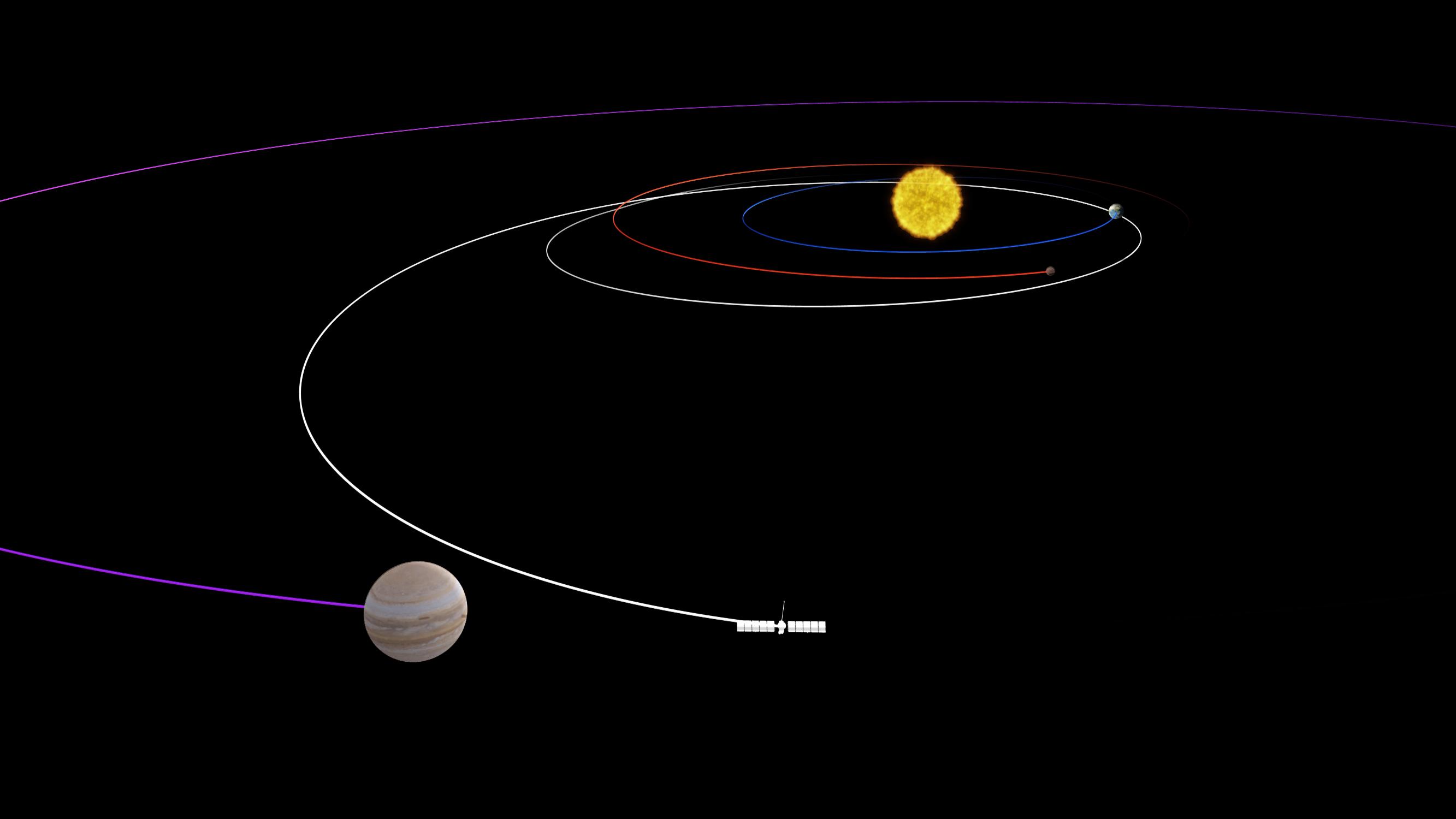All Resources
Europa Clipper's Looping Journey to Jupiter (Artist's Concept)

This artist's concept depicts the long, looping path NASA's Europa Clipper spacecraft will take to reach the Jupiter system. Covering a distance of about 1.8 billion miles (2.9 billion kilometers), the path swings past Mars, then Earth, using the two planets' gravity as a slingshot to add speed to the spacecraft's journey to Jupiter. Once in orbit at Jupiter, the spacecraft will conduct dozens of close flybys of the gas giant's icy moon Europa.
Europa Clipper's three main science objectives are to determine the thickness of the moon's icy shell and its interactions with the ocean below, to investigate its composition, and to characterize its geology. The mission's detailed exploration of Europa will help scientists better understand the astrobiological potential for habitable worlds beyond our planet.
Managed by Caltech in Pasadena, California, NASA's Jet Propulsion Laboratory leads the development of the Europa Clipper mission in partnership with APL for NASA's Science Mission Directorate in Washington. APL designed the main spacecraft body in collaboration with JPL and NASA's Goddard Space Flight Center in Greenbelt, Maryland, NASA's Marshall Space Flight Center in Huntsville, Alabama, and Langley Research Center in Hampton, Virginia. The Planetary Missions Program Office at Marshall executes program management of the Europa Clipper mission.
NASA's Launch Services Program, based at Kennedy, manages the launch service for the Europa Clipper spacecraft, which will launch on a SpaceX Falcon Heavy rocket from Launch Complex 39A at Kennedy.


